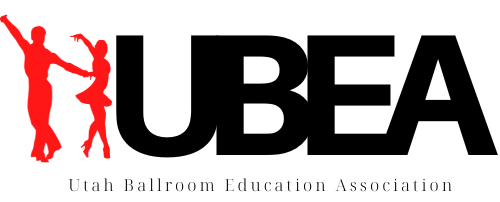-
International Style
-
International Style Ballroom/Standard (the main difference between Ballroom and Smooth is dancers in the International Ballroom style must maintain the dance frame for the entirety of the dance)
-
Waltz – Slow and elegant dance defined by 3/4 timing and the rise and fall of the dancers
-
Tango – Very dramatic dance with sharp movements mostly danced with bent knees
-
Foxtrot – Smooth gliding action across the floor – jazz or big band music
-
Viennese Waltz – A faster dance set to 3/4 timing that turns around the floor continuously
-
Quickstep – Very energetic dance filled with hops, skips, and fast footwork
-
-
International Style Latin
-
Cha Cha – A faster Latin dance with quick foot action and sharp movement
-
Samba – Inspired by the Brazilian dance and “Carnival” – bounce created by knee and ankle action
-
Rumba – Slowest in this style meant to emphasize hip and body action as well as connection with the partner
-
Paso Doble – Dramatic dance inspired by Flamenco dancing, the Matador, etc.
-
Jive – Quickest dance in the style with high kicks, lots of energy and personality
-
-
-
American Style (also lumped into social dancing)
-
American Smooth
-
Waltz – Slow and elegant dance defined by 3/4 timing and the rise and fall of the dancers
-
Tango – Very dramatic dance with sharp movements mostly danced with bent knees
-
Foxtrot – Smooth gliding action across the floor – jazz or big band music
-
Viennese Waltz – A faster dance set to 3/4 timing
-
**Peabody** – Never danced in traditional competitions but similar to a Quickstep or Charleston
-
-
American Rhythm
-
Cha Cha – A faster Latin dance with quick foot action and sharp movement
-
Rumba – Faster than it’s international counterpart – still focusing on hip and body action or Cuban action
-
Swing (East Coast) – Very energetic, lots of turns and and spins for both partners
-
Bolero – Slowest of the rhythm dances incorporating a graceful rise and fall
-
Mambo – Fast toe taps, flicks, ticks to accentuate music – danced on the “2”
-
-
-
Additional Social Dances
-
-
Salsa – Very popular social dance with turns, hip action and styling – can be danced on the “1” or “2”
-
Merengue – One of the easiest Latin dances to learn with recognizable foot-to-foot weight transfers
-
Bachata – Popular Latin social dance with hip action and body movement
-
Argentine Tango – Characterized by the close embrace-hold, foot and leg tricks, as well as an often moody styling
-
Lindy Hop – One of the original swing dances, quick foot action, triple-steps, and often tricks
-
West Coast Swing – Derived from the Lindy Hop but with a more sleek-styling, improvisation and elastic hold
-
etc. (Certainly there are styles that are not listed above but this covers the majority of what you might find on team or at competitions)
-
-
